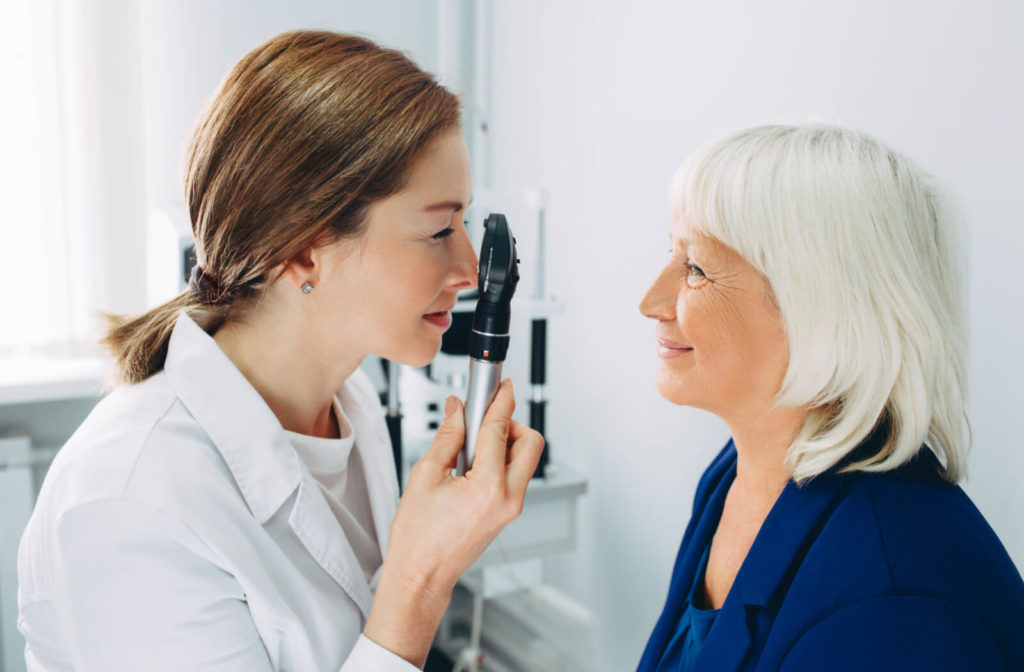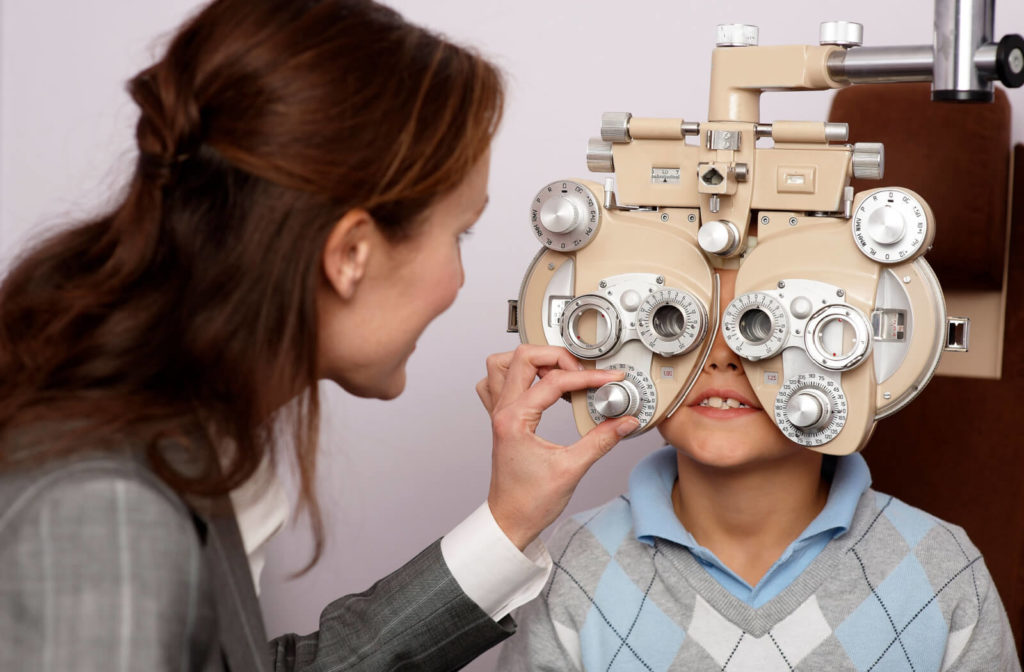Depending on age, comprehensive eye exams should be received annually or, at the very least, every 2 years. Getting an eye exam on the recommended schedule increases the chances of catching severe problems before they become serious. It also ensures that your prescription is always up to date.
Not all eye exams are identical because each person’s situation differs. This article explores common tests that your optometrist may include in a comprehensive eye and why they’re important. It’ll also give you an idea of some of the eye diseases or conditions your eye doctor is testing for.
Why Do We Get Comprehensive Eye Exams?
Many eye conditions, such as glaucoma or macular degeneration, can begin developing with little to no symptoms. Once someone is experiencing the symptoms from either of these issues, there is often already some damage, and treatment may be more difficult.
This is why getting eye examinations on the schedule laid out by the American Optometric Association is essential. However, remember that your optometrist may recommend a more frequent plan if you are at a higher risk for ocular problems.
How Often Should We Get a Comprehensive Eye Exam?
This is the recommended minimum eye exam schedule:
- Birth to 2: One exam at 6 months to a year
- 3 to 5: At least one exam
- 6 to 17: One exam before first grade and annually afterward
- 18 to 64: At least one exam every 2 years
- 65 onward: Annual exams
What Is Included in a Comprehensive Eye Exam?
There are quite a few things that an eye doctor may include in a comprehensive eye exam. As a general rule, most optometrists will explain what tests they are doing and why. This article will cover some of the common things to expect during an examination.
- Medical history: Before the eye doctor can know if there are extra tests you need, they will ask you about your personal and family medical history. For example, if high blood pressure runs in the family, this may put you at increased risk for glaucoma. The optometrist will screen thoroughly for the disease.
- Visual acuity: This test determines how good (or bad) the vision is in your eyes. The results of this test are written as a fraction. For example, 20/20 or 20/40 are results you may recognize.
- Refraction: If you cannot focus on objects at various distances, this is determined by a refractive error. You may have astigmatism or be nearsighted or farsighted. Essentially, the eye doctor uses a tool called a phoropter to see how the lens focuses light. Then, based on your input, they reach the best correction for your refractive error.
- Eye health and movement: Your eye doctor will likely check how well your eyes move and look at them closely to ensure they are healthy. At this point, there’s a good chance the doctor will use dilating eye drops to ensure they can get a good look in and behind your eye with their tools.
- Additional testing: Depending on your risk of certain conditions or diseases, and based on what they find in the initial tests, your optometrist may do some additional tests.
What Is the Optometrist Looking For?
Some people think that a comprehensive eye exam simply shows how good your vision is. However, there are a lot of things that your optometrist will be looking for as they examine your eyes.
These things include:
- Dry eye syndrome
- Glaucoma
- Macular degeneration
- How well you can see
- The muscle strength and control in your eyes
- Cataracts

Preparing for a Comprehensive Eye Exam
Typically a comprehensive eye exam is not something you need to worry about. As long as you’re prepared for what happens during the exam, there should be no issues. Here are a couple of things to keep in mind when going to the optometrist’s clinic:
- Arrange for a ride: Often, pupil dilation is a part of a comprehensive eye exam, and some eye doctors have policies about patients driving afterward. If you phone ahead, you may be able to get away with simply bringing good sunglasses for the drive home, depending on the doctor’s policy.
- Family history: Your optometrist will likely ask you many questions surrounding your and your family’s health history—not even specifically about your eyes. For example, blood pressure and a history of heart disease are two things that can affect risk factors for certain ocular conditions.
- Insurance information: If you have third-party coverage, some clinics may be able to directly bill your insurance company which saves you from needing to be reimbursed.
Booking Your Next Eye Exam
If it’s time for your next exam or you’re having strange new symptoms, give us a call at Dr. Bladh OD. The helpful and professional staff are happy to answer any questions you have about a comprehensive examination or schedule an appointment with Dr. Bladh or Dr. Mak at a convenient time.



